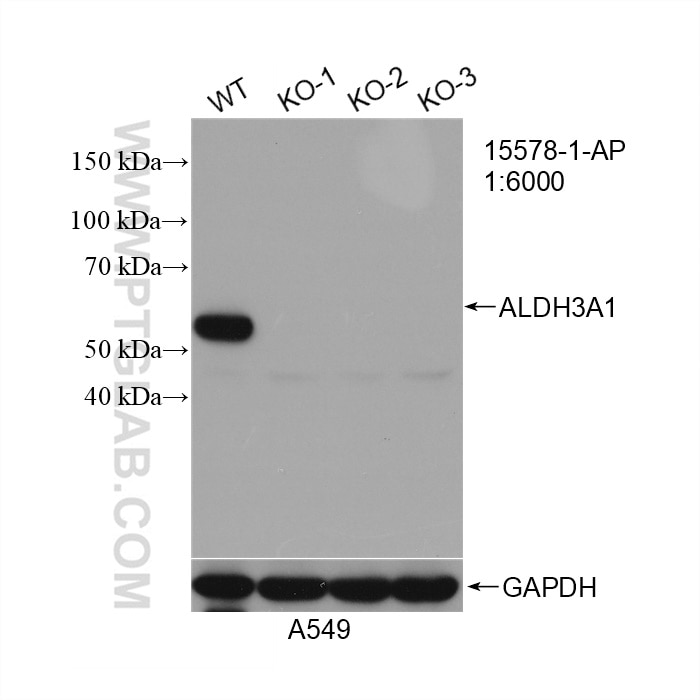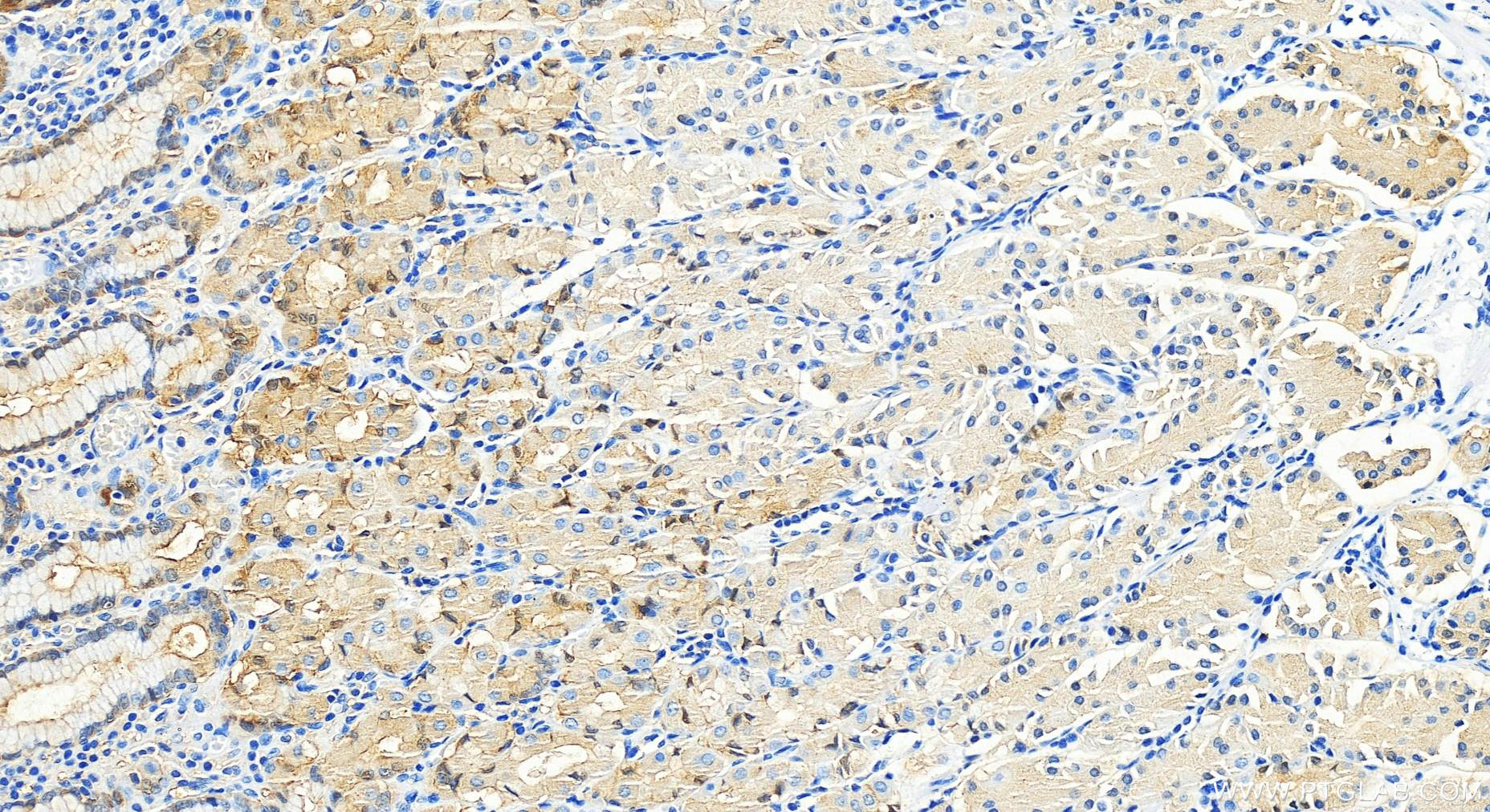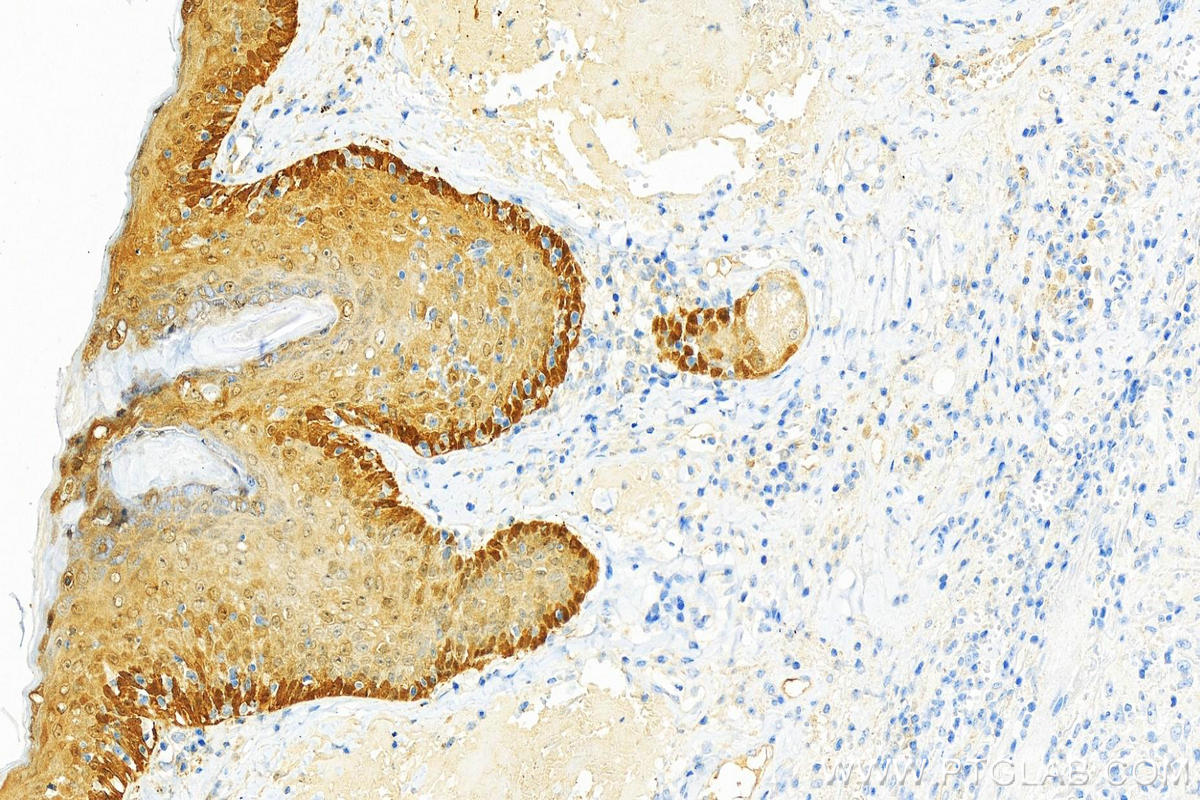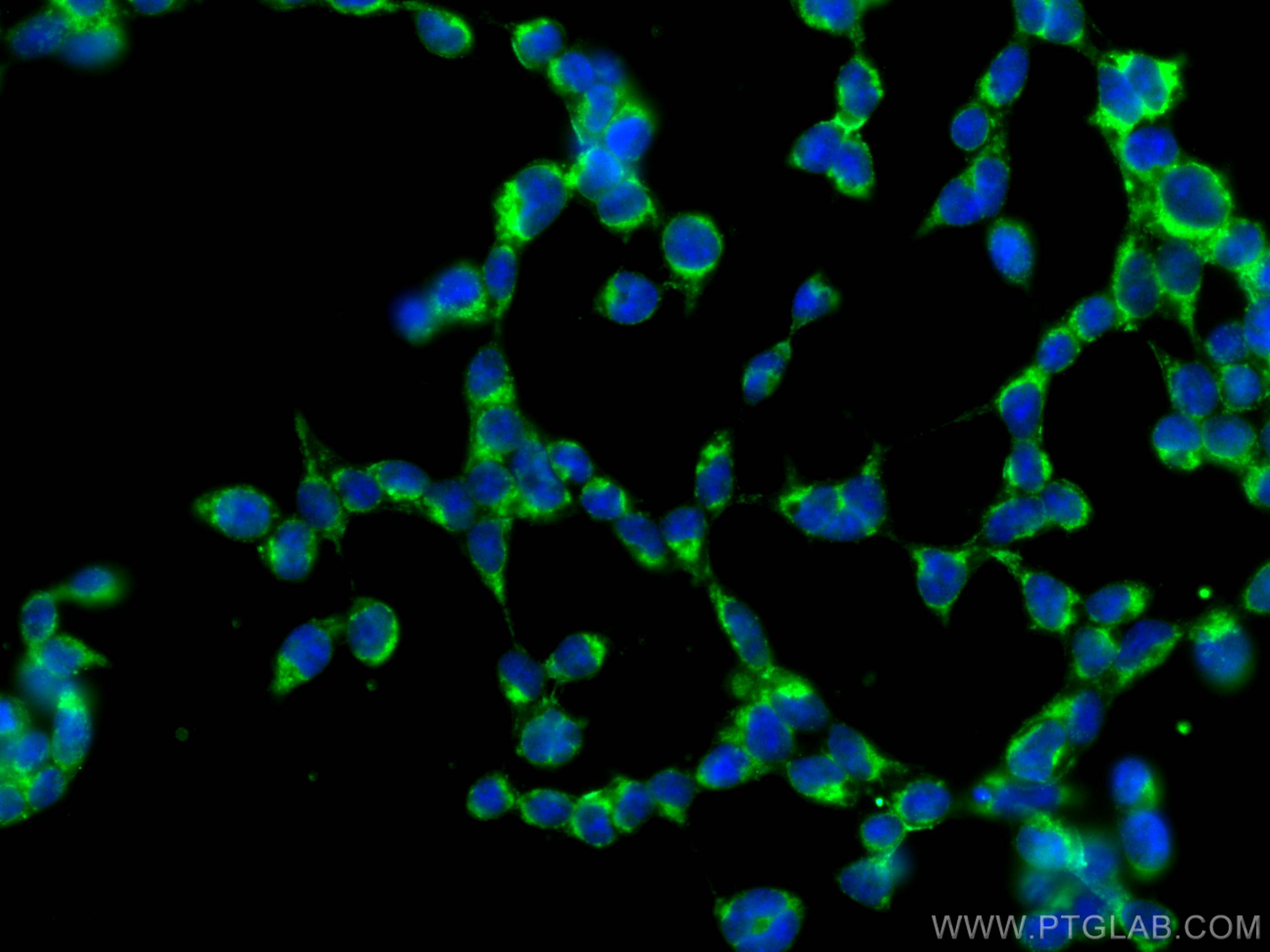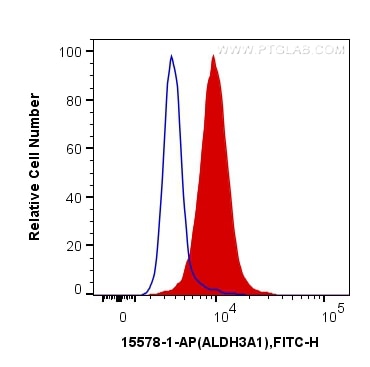- Phare
- Validé par KD/KO
Anticorps Polyclonal de lapin anti-ALDH3A1
ALDH3A1 Polyclonal Antibody for WB, IHC, IF/ICC, FC (Intra), IP, ELISA
Hôte / Isotype
Lapin / IgG
Réactivité testée
Humain, rat, souris et plus (1)
Applications
WB, IHC, IF/ICC, FC (Intra), IP, ELISA
Conjugaison
Non conjugué
N° de cat : 15578-1-AP
Synonymes
Galerie de données de validation
Applications testées
| Résultats positifs en WB | cellules A549, |
| Résultats positifs en IP | cellules A549, |
| Résultats positifs en IHC | tissu de cancer de la peau humain, il est suggéré de démasquer l'antigène avec un tampon de TE buffer pH 9.0; (*) À défaut, 'le démasquage de l'antigène peut être 'effectué avec un tampon citrate pH 6,0. |
| Résultats positifs en IF/ICC | cellules HEK-293T, |
| Résultats positifs en FC (Intra) | cellules HEK-293, |
Dilution recommandée
| Application | Dilution |
|---|---|
| Western Blot (WB) | WB : 1:20000-1:100000 |
| Immunoprécipitation (IP) | IP : 0.5-4.0 ug for 1.0-3.0 mg of total protein lysate |
| Immunohistochimie (IHC) | IHC : 1:5000-1:20000 |
| Immunofluorescence (IF)/ICC | IF/ICC : 1:50-1:500 |
| Flow Cytometry (FC) (INTRA) | FC (INTRA) : 0.25 ug per 10^6 cells in a 100 µl suspension |
| It is recommended that this reagent should be titrated in each testing system to obtain optimal results. | |
| Sample-dependent, check data in validation data gallery | |
Applications publiées
| KD/KO | See 1 publications below |
| WB | See 12 publications below |
| IHC | See 3 publications below |
| IF | See 13 publications below |
Informations sur le produit
15578-1-AP cible ALDH3A1 dans les applications de WB, IHC, IF/ICC, FC (Intra), IP, ELISA et montre une réactivité avec des échantillons Humain, rat, souris
| Réactivité | Humain, rat, souris |
| Réactivité citée | rat, Humain, Lapin, souris |
| Hôte / Isotype | Lapin / IgG |
| Clonalité | Polyclonal |
| Type | Anticorps |
| Immunogène | ALDH3A1 Protéine recombinante Ag7977 |
| Nom complet | aldehyde dehydrogenase 3 family, memberA1 |
| Masse moléculaire calculée | 50 kDa |
| Poids moléculaire observé | 50 kDa |
| Numéro d’acquisition GenBank | BC004370 |
| Symbole du gène | ALDH3A1 |
| Identification du gène (NCBI) | 218 |
| Conjugaison | Non conjugué |
| Forme | Liquide |
| Méthode de purification | Purification par affinité contre l'antigène |
| Tampon de stockage | PBS with 0.02% sodium azide and 50% glycerol |
| Conditions de stockage | Stocker à -20°C. Stable pendant un an après l'expédition. L'aliquotage n'est pas nécessaire pour le stockage à -20oC Les 20ul contiennent 0,1% de BSA. |
Informations générales
ALDH3A1(Aldehyde dehydrogenase, dimeric NADP-preferring), also named as ALDH3, is a member of the ALDH superfamily, which consists of NAD(P)+-dependent enzymes that catalyse the oxidation of a wide variety of endogenously produced and exogenous aldehydes to their corresponding acids. It is expressed at high concentrations in the mammalian cornea and it is believed that it protects this vital tissue and the rest of the eye against UVlight-induced damage.(PMID:12943535). It can exsit as a dimer(PMID:16919242). This antibody is specific to ALDH3A1.
Protocole
| Product Specific Protocols | |
|---|---|
| WB protocol for ALDH3A1 antibody 15578-1-AP | Download protocol |
| IHC protocol for ALDH3A1 antibody 15578-1-AP | Download protocol |
| IF protocol for ALDH3A1 antibody 15578-1-AP | Download protocol |
| IP protocol for ALDH3A1 antibody 15578-1-AP | Download protocol |
| Standard Protocols | |
|---|---|
| Click here to view our Standard Protocols |
Publications
| Species | Application | Title |
|---|---|---|
Nat Commun Impact of keratocyte differentiation on corneal opacity resolution and visual function recovery in male rats | ||
Adv Healthc Mater Sustained Release of TPCA-1 from Silk Fibroin Hydrogels Preserves Keratocyte Phenotype and Promotes Corneal Regeneration by Inhibiting Interleukin-1β Signaling. | ||
Biofabrication Development of a novel bioartificial cornea using 3D bioprinting based on electrospun micro-nanofibrous decellularized extracellular matrix | ||
Cell Chem Biol Lipid-derived electrophiles mediate the effects of chemotherapeutic topoisomerase I poisons. |


